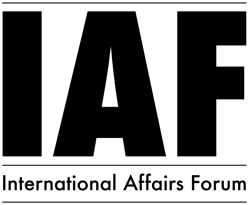By Qi Lin
The U.S. pivot to the Asia-Pacific in Obama Administration has concentrated on reinforcing traditional alliances, redeploying Navy forces, and creating multilateral cooperation mechanisms, such as Trans-Pacific Partnership (TPP). Unfortunately, mounting suspicions have undermined the Sino-U.S. relationship and stability and prosperity in the Asia-Pacific.
Washington needs to take a larger, more constructive approach. It needs not only to engage China but use U.S. leverage to influence China to act in a parallel fashion. U.S. interests in the Asia-Pacific rely on regional stability and require a compatible China. The focus of U.S. policy toward China needs to become a win-win relationship.
In September, Obama and President Xi agreed to work together to constructively manage differences and decided to expand and deepen cooperation. This path is promising:
- Greater trust. When the United States emphasizes engaging China in multilateral frameworks it leads, both will be less skeptical about each other’s ambition. Therefore, the inclusion of China in the Trans-Pacific Partnership (TPP) becomes important, and the establishment of new security structure with China to share the U.S. defense responsibilities. The invitation for Chinese Navy to participate in the Rime of the Pacific Exercise in 2016 is a likely step forward in this direction.
- Pragmatic values. Beijing’s political challenges push Chinese leaders to put their priority on domestic growth and stability. Accommodating to U.S. policy preferences enables China to retain stability with a restless populace. Better Sino-U.S. relations take pressure off the US Navy’s budget and even provide the United States an opportunity to reinforce its strength on dealing with security challenges, like nuclear nonproliferation in the North Korea.
- A more manageable regional security order. Statements by President Obama in support of a One-China policy and a resolution between maritime claimants reassure China that the U.S. will not act as a regional trouble-maker. The statements by President Xi that China is not interested in pursuing hegemony prevent China sabotaging the current security order. A wider strategic dialogue will improve the Pentagon’s ability to assess China’s military capabilities. Risks of miscalculation will be reduced.
America’s allies and China’s neighbors may feel less secure when China and the United States get along. Yet their confidence will rebound as both countries develop a shared understanding of responsibilities, and create more development opportunities. All will become stakeholders in better U.S.-China bilateral relations.
The U.S. and China should make every effort to move forward to a beneficial partnership. Neither party wants confrontation and conflict. Both realize how much is at stake, and how much they have to gain from a successful, stable relationship. China’s future membership in TPP, dialogue and cooperation between the Pentagon and China’s military, and a pragmatic approach to managing regional differences points the way to a better future. Both the United States and China want and deserve an Asia-Pacific region that is prosperous and secure.
Qi Lin is a Masters degree student at the George Washington University Elliott School of International Affairs.

